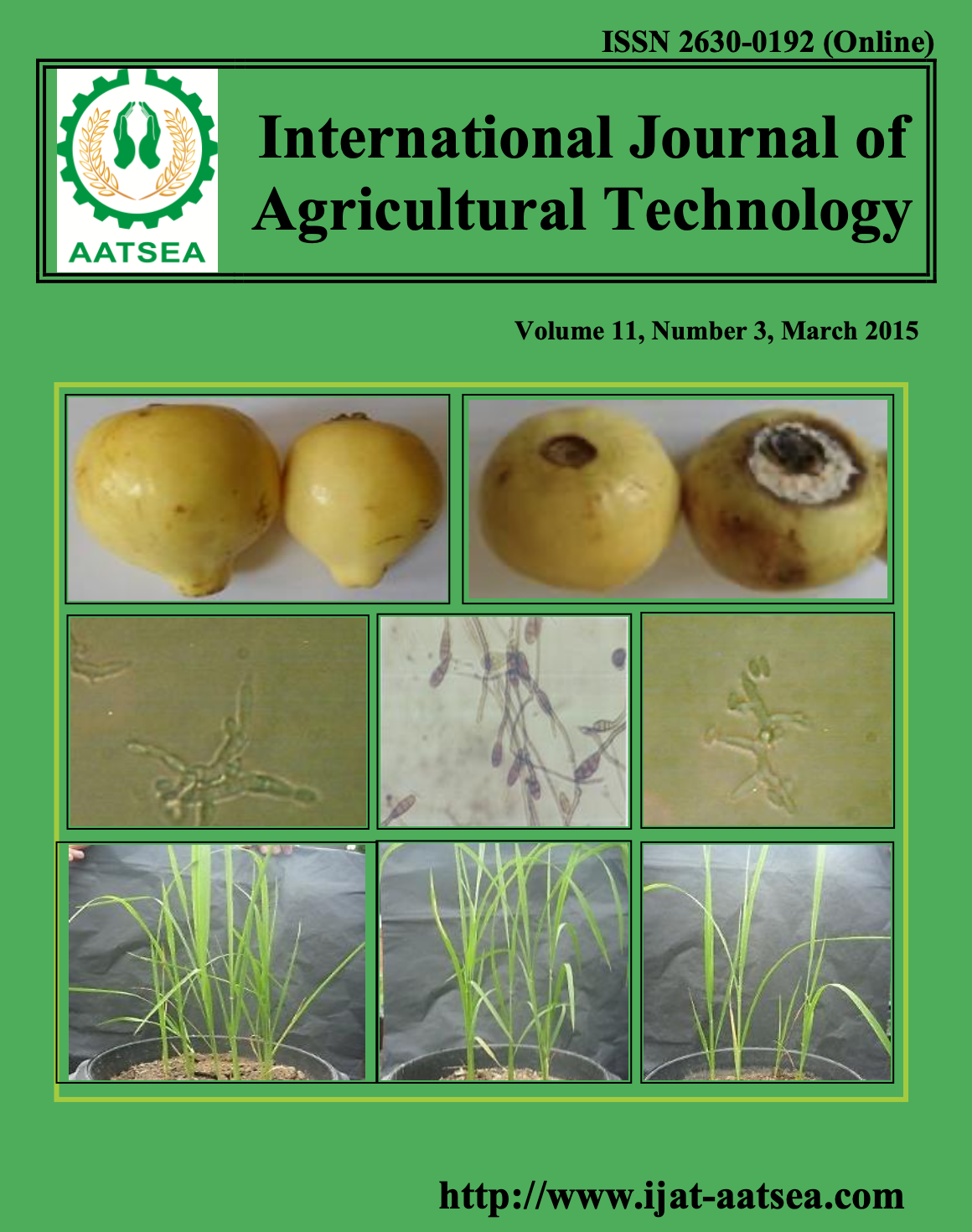The adoption of variable-rate application of fertilizers technologies: The case of Iran
Main Article Content
Abstract
Article Details

This work is licensed under a Creative Commons Attribution-NonCommercial-NoDerivatives 4.0 International License.
References
Adrian, A. M., Norwood, S. H. and Mask, P. L. (2005). Producer’s perceptions and attitudes toward precision agriculture technologies. Computers and Electronics in Agriculture 48:256-271.
Agarwal, R. and Prasad, J. (1998). A conceptual and operational definition of personal innovativeness in the domain of information technology. Information Systems Research 9:204-215.
Ajzen, I. (1991). The theory of planned behavior. Organizational Behavior and Human Decision Processes 50:179-211.
Bagozzi, R. P. and Yi, Y. (1988). On the evaluation of structural equation models. Journal of Academy of Marketing Science 16:74-94.
Davis, F. D. (1989). Perceived usefulness, perceived ease of use, and user acceptance of information technology. MIS Quarterly 13:319-340.
Fishbein, M. and Ajzen, I. (1975). Belief, attitude, intention and behavior. Addison-Wesley.
Fountas, S., Pedersen, S. and Blackmore, S. (2005). ICT in precision agriculture: Diffusion of technology. Retrieved from http://departments.agri.huji.ac.il/economics/gelb-pedersen-5.pdf.
Fu, J., Farn, C. and Chao, W. (2006). Acceptance of electronic tax filing: A study of taxpayer intentions. Information and Management 43:109-126.
Gefen, D., Straub, D. W. and Boudreau, M. (2000). Structural Equation Modeling and Regression: Guidelines for research practice. Communications of Association for Information Systems 4:1-78.
Kumar, H. D. (2002). Environmental technology and biosphere management. Enfield, New Hampshire: Science Publishers Inc. 616 pp.
Lee, K. C., Kang, I., and Kim, J. S. (2007). Exploring the user interface of negotiation support systems from the user acceptance perspective. Computers in Human Behavior 23:220-239.
Maohua, W. (2001). Possible adoption of precision agriculture for developing countries at the threshold of the new millennium. Computers and Electronics in Agriculture 30:45-50.
Marklaxcfnd, D. (2006). Latent variable modeling: An introduction to confirmatory factor analysis and structural equation modeling. University of Wales, Bangor. Retrieved from http://www.bangor.ac.uk/~pes004/resmeth/lisrel/lisrel.htm.
Phillips, L. A., Calantone, R., and Lee, M. T. (1994). International technology adoption: Behavior structure, demand certainty and culture. Journal of Business and Industrial Marketing 9:16-28.
Porter, C. E., and Donthu, N. (2006). Using the technology acceptance model to explain how attitudes determine internet usage: The role of perceived access barriers and demographics. Journal of Business Research 59:999-1007.
Rezaei-Moghaddam, K., Karami, E., and Gibson, J. (2005). Conceptualizing sustainable agriculture: Iran as an illustrative case. Journal of Sustainable Agriculture 27:25-56.
Rezaei-Moghaddam, K. and Salehi, S. (2010). Agricultural specialists’ intention toward precision agriculture technologies: Integrating innovation characteristics to technology acceptance model. African Journal of Agricultural Research 5:1191-1199.
Rogers, E. M. (1995). Diffusion of innovations 4th edition. New York: Free Press.
Shibusawa, S. (2002). Precision farming approaches to small-farm agriculture. Agro-chemicals report 2:13-20.
Songa, G., Chena, Y., Tianb, M., Lv, S., Zhanga, S. and Liua, S. (2010). The ecological vulnerability evaluation in southwestern mountain region of china based on GIS and AHP method. Procedia Environmental Sciences 2:465-475.
Taylor, S. and Todd, P. A. (1995). Understanding information technology usage: A test of competing models. Information Systems Research 6:145-176.
Wu, J. and Wang, S. (2005). What drives mobile commerce?: An empirical evaluation of the revised technology acceptance model. Information and Management 42:719-729.
Yi, M. Y., Jackson, J. D., Park, J. S. and Probst, J. C. (2006). Understanding information technology acceptance by individual professionals: Toward an integrative view. Information and Management 43:350-363.


